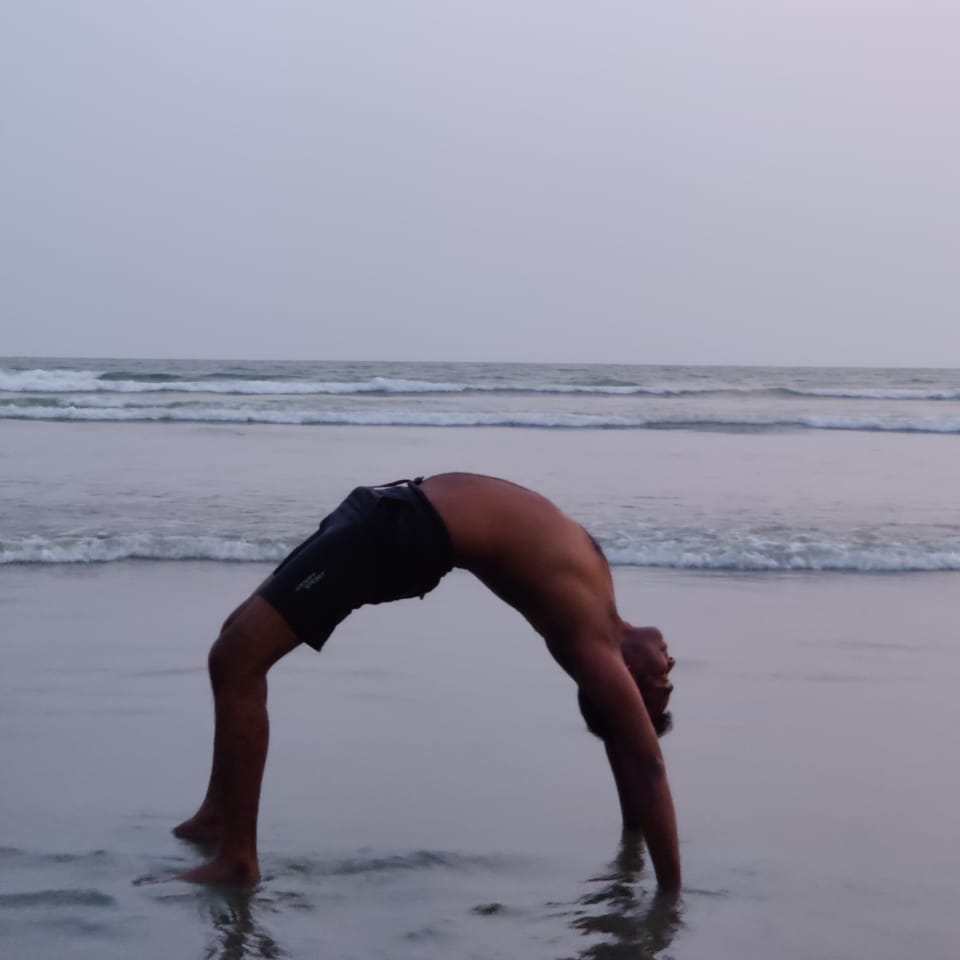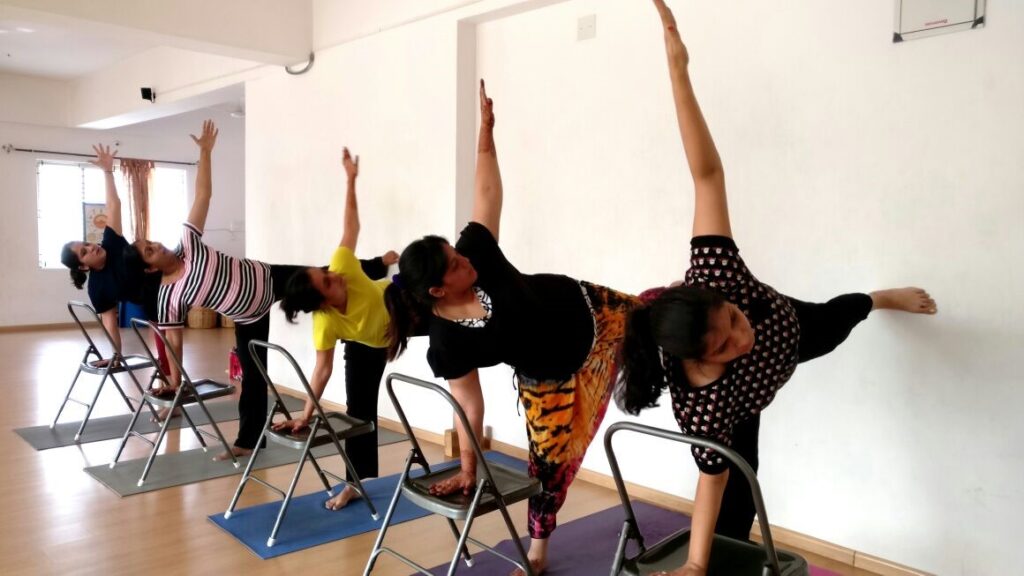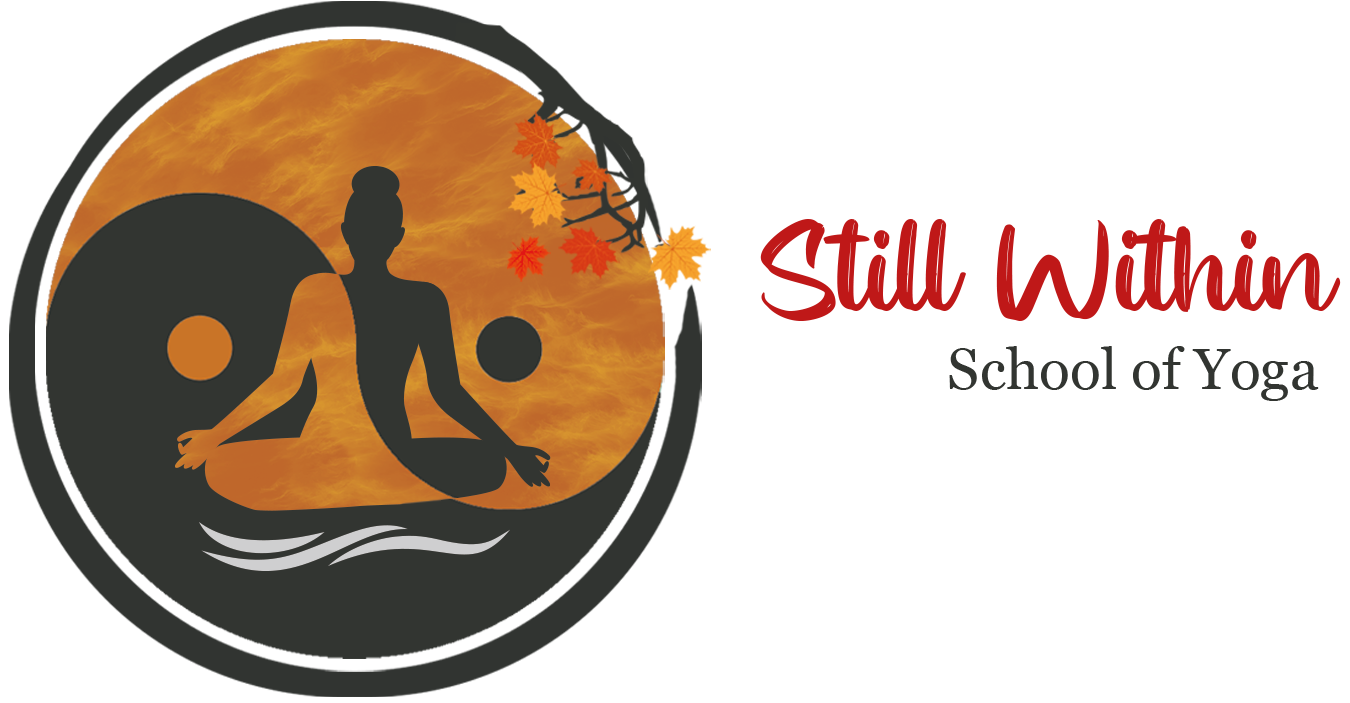This space is dedicated to blog posts and other informational sources related to yoga, spirituality and healing practices.

Different states of consciousness (awareness) can be achieved by keeping the spine in different positions. Our spine can bend to the back and front, from side to side and twist. The practitioner of Yoga experiences the whole range of states of consciousness the human body is capable of eliciting.
Flexibility of the spine gets affected as we grow up. In children the spine is very flexible and they can naturally bend back without much strain. If you ask a child to do Poorna Bhujangasana, he/she will do it effortlessly. This is the source of unlimited energy and dynamism children have. Here, I will talk about the experience and benefits of practicing backbends, i.e. postures where the spine is kept in extension.
Lifestyles create patterns. The way you think and the way you move your body engrave in your brain particular patterns that define your personality. Specific changes in your personality can be achieved through breaking these patterns and asana practice can help you attain that. Backbends can facilitate the breaking of patterns related to being shy, feeling uncomfortable in a new group, finding difficulty in expression, feeling hurt easily and lingering to that feeling for long. They can also be useful if you lack confidence, assertiveness, have difficulty in saying no etc. Practice backbends for a few weeks and you will naturally feel a surge of confidence and related changes in your personality. Moreover, if you lack energy, creativity and feel lazy, you should also find that a regular practice of backbends will help you overcome that.
So how does it work?
When we adopt a backbend, the surface area of the body increases to its maximum. We are bigger than what we normally are. This creates openness in the body and mind, brings about feelings of happiness and openness. Expansion is happiness – we experience happiness when our body or mind expand. E.g. people who live in a warm climate that has a loosening effect on their joints and muscles are less susceptible to depression than those who live in predominantly cold weather. Another example is when we feel happy while reaching out to other people. This is a mental expansion. As social beings, we cannot be happy if we isolate ourselves from others, unless we have chosen to do certain meditative practices.
Anatomically, backbends realign the spine and help in postural correction. The capacity of the lungs increases as backbends stretch the chest and intercostal muscles. Lungs get more space as compared to when you are slouching, which helps you breathe more fully.
Physiologically, backbends stimulate the sympathetic nervous system, which leads to better circulation, increased digestion and metabolic rate, better alertness and sensory perception etc. However, if used properly, this stimulation can be used to lead to a deeper relaxation. At the pranic level, backbends stimulate prana which is responsible for your energy, activities, dynamism and the ability to take initiatives.
As mentioned above, there are amazing psychological benefits of practicing backbends. They can be particularly transformative to introvert personalities, especially if you are shy, take time to feel comfortable with new people, lack confidence, courage or ease of expression, have hard time taking decisions or be spontaneous, often feel gloomy, depressive, like a victim or defeated by negative thoughts, if you have inferiority complex and so on. Regular practice of backbends will help you overcome that.
It is amazing to see how people change positively once they start practicing backbends regularly. They experience a fresh surge of enthusiasm, openness and freedom. In my experience, backbends are especially good for people who suffer from depression. A regular backbends practice combined with a change in outlook on life, will take them out of depression completely.

Prenatal Yoga
If you are pregnant and looking for a way to relax and stay fit, prenatal yoga might be just the thing for you. Prenatal yoga is safe right from the time of conception (or in preparation for conception) to the time of delivery as long as there are no medical contraindications.
Here we present some of the benefits of prenatal yoga, precautions while practicing and what a typical prenatal class entails.
Why prenatal yoga?
Once you find out you are pregnant, there are a host of restrictions you may face. In addition to the typical issues of lack of time, work stress and work-life balance, you may find that certain exercises and activities that you used to pursue are no longer safe, or that the physiological and emotional changes no longer make these activities appealing.
Prenatal yoga, whether practiced in a group class or in a private class offers an effective form of fitness while ensuring the safety of the mother and the baby. The benefits of yoga during pregnancy are well established and documented over the past several decades.
What are some of the main benefits?
- Increases the strength, flexibility and endurance of muscles needed for childbirth
- Improves balance and circulation
- Improves sleep
- Reduces stress and anxiety, develops mental strength
- Decreases lower back pain, nausea, heart burn, headaches and shortness of breath
- Reinforces breathing that is useful at the time of delivery
- Creates a connection with the baby
- Allows time for self-nurturing
- Speeds up post-partum recovery
So…what does a typical prenatal yoga class look like?
Prenatal yoga classes are specially designed, keeping in mind the general needs of the
student/s such as number of weeks of gestation, physical fitness prior to
pregnancy and hormonal changes. Additionally, any individual needs or
restrictions such as high blood pressure, injuries, etc. are borne in mind
while planning the classes. Therefore, the classes can range from gentle
stretching, breath work and meditation to more rigorous asana practice followed
by deep relaxation. A typical prenatal class at Still Within lasts about 60
minutes and includes: gentle warm up, modified sun salutations, modified asanas
with use of props, Pranayama and relaxation/ meditation.
Some do’s of prenatal yoga
- Check with your doctor before enrolling for classes
- Inform your instructor of all past and present issues regarding your health and fitness
- Be regular in your practice
- Listen to your body at all times and modify your practice as needed
- Wear non-restrictive, breathable clothes to class
- Eat a light snack about an hour before class and carry water and another snack for after class
- Connect with other students in the class, share experiences and enjoy the things to come!
Aparna Ramesh, Still Within School of Yoga
